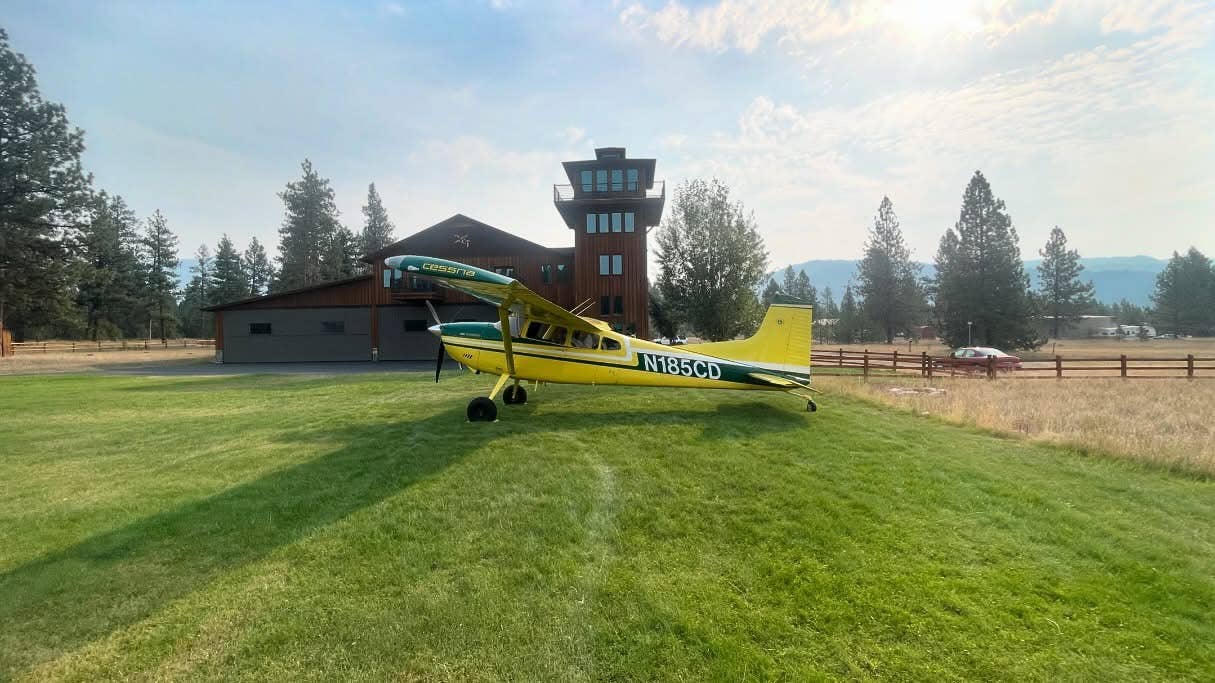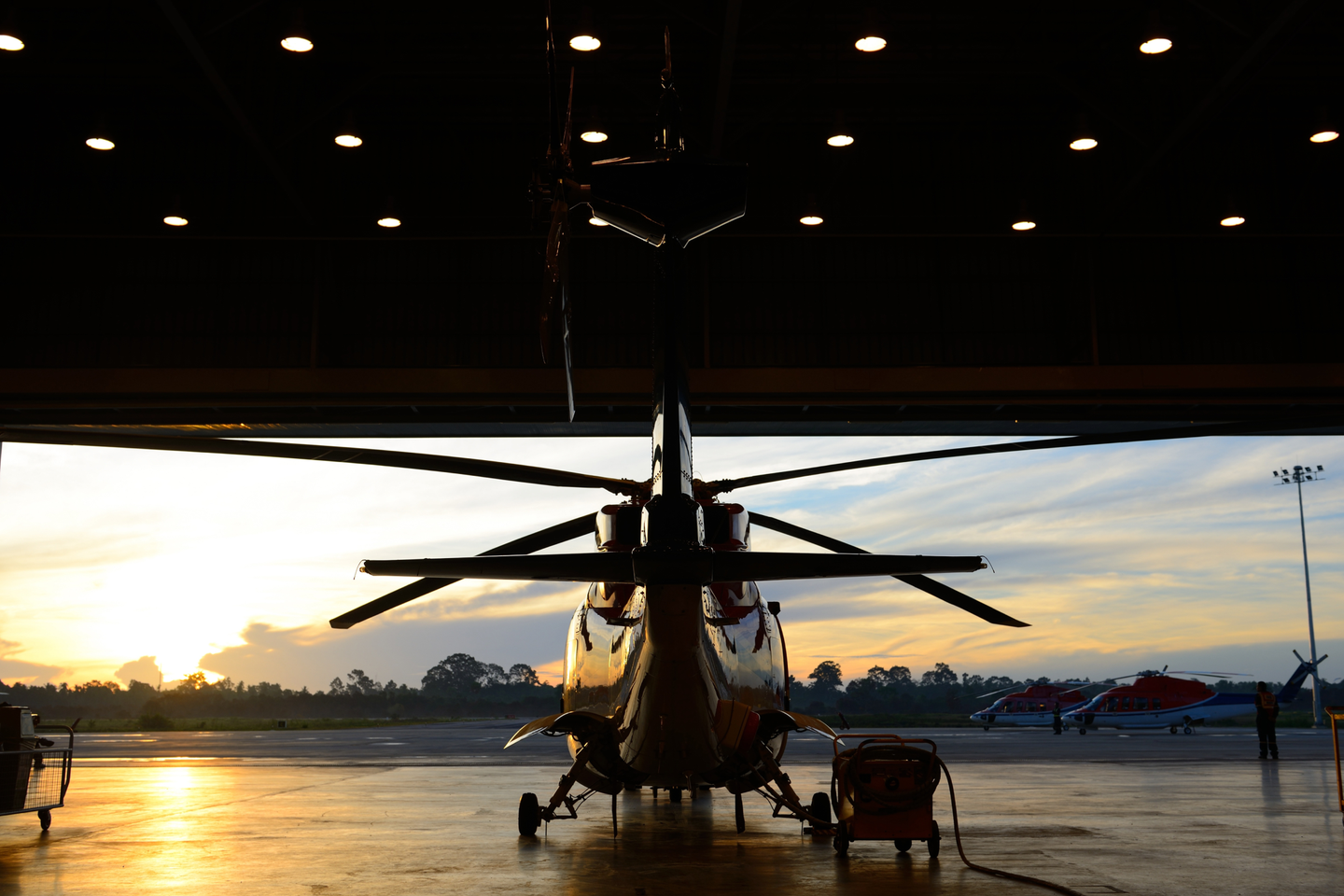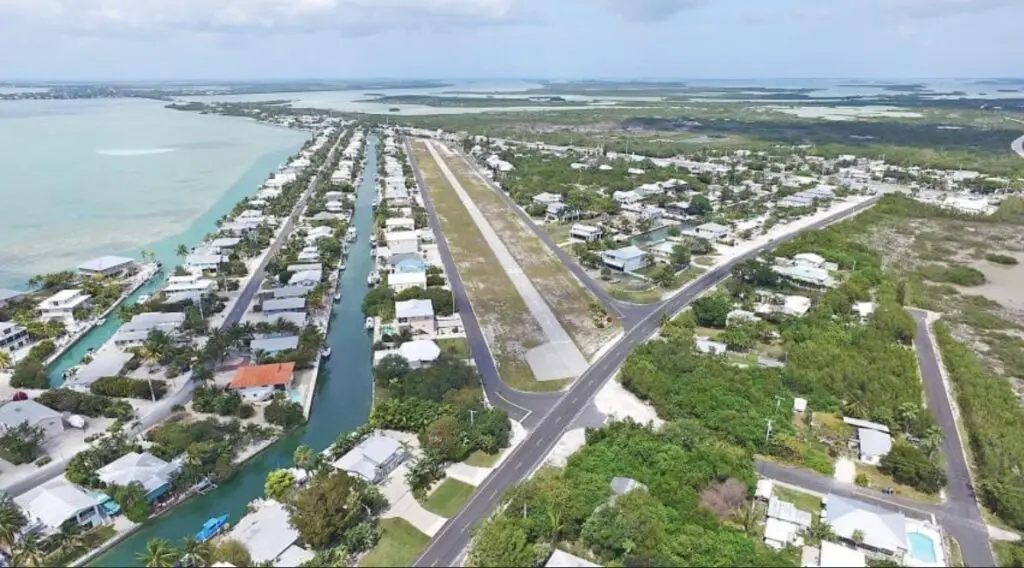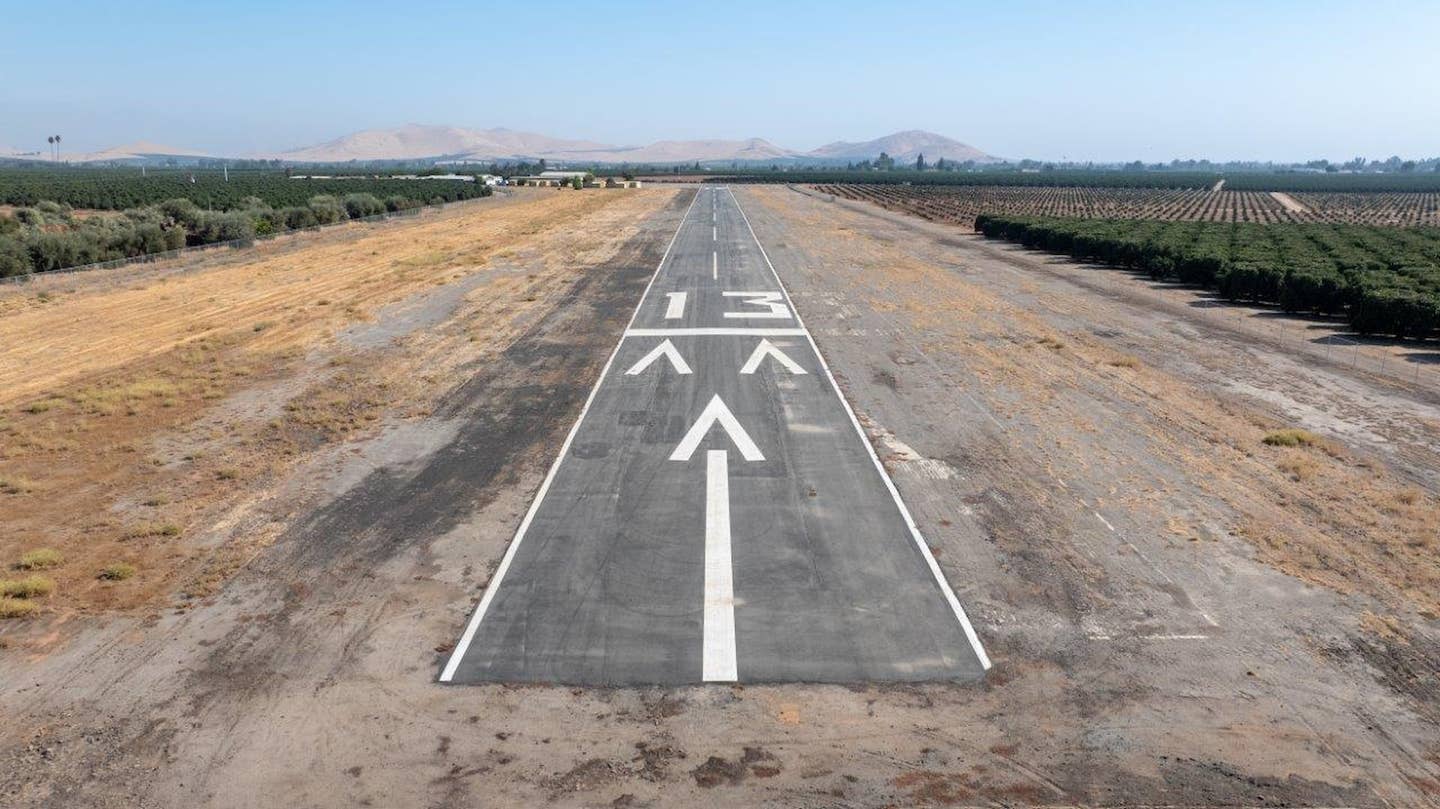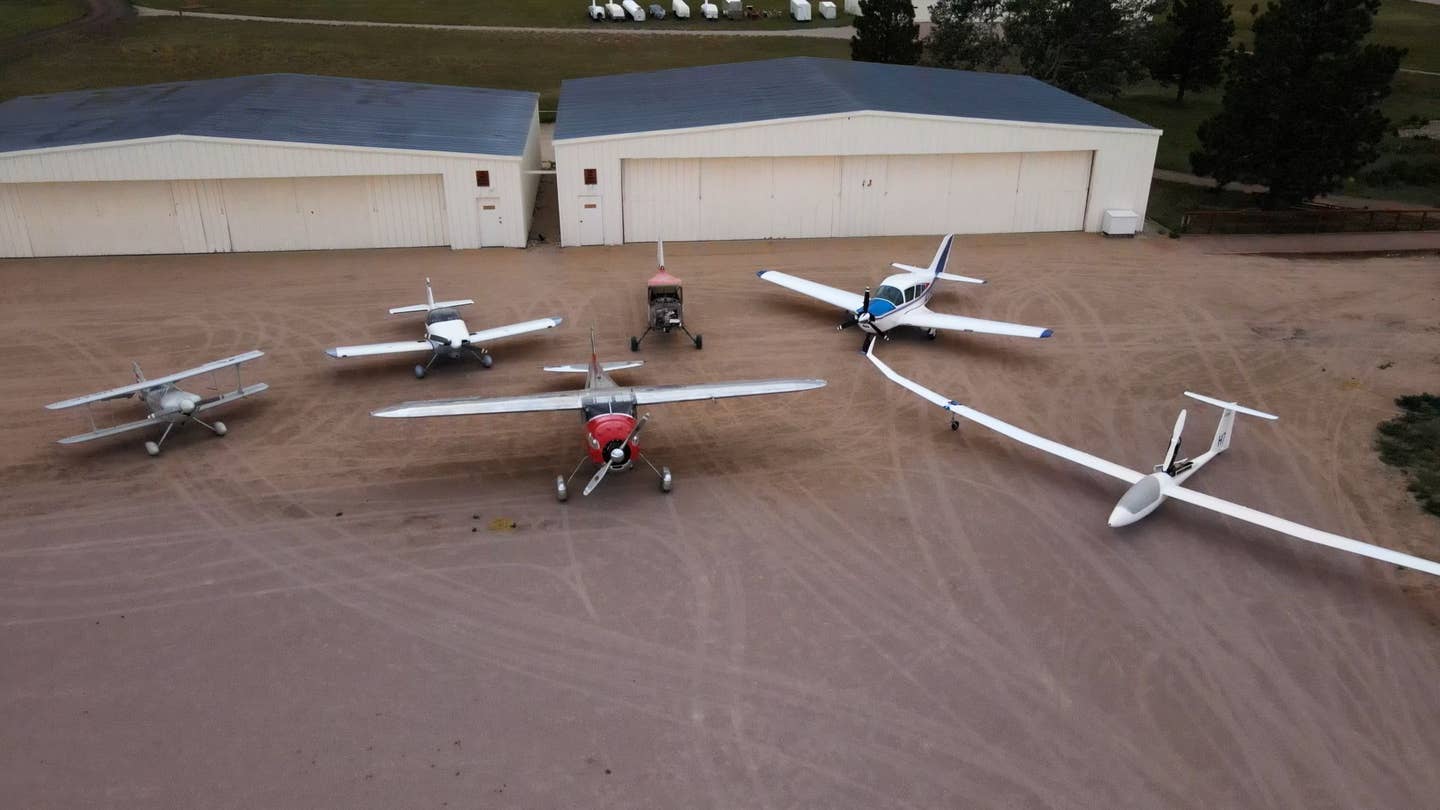
Some of Kelly Airpark’s eclectic mix of aircraft. [Photo: Vic Vennari/Kelly Airpark]
Ever since its inception in 1987, the fly-in community of Kelly Airpark (CO15) near Elbert, Colorado, has had a strong focus on gliders and other general aviation traffic. As the community has evolved over the years, so has its most important asset—its hard-surface runway.
Recently, the airpark’s board of directors determined that the 3,800-foot-long paved main runway (17/35) was well overdue for a refresh.
Alan Hoover, president of the Kelly Airpark Homeowners Association and a board member, explained the state of the runway and the attention that it needed.
“The main runway was originally planned to be an all-dirt strip, but early experience with [glider] towing operations and weather made it clear that an asphalt strip would be required in order to have reliable operations,” Hoover said. “So, the original developer of the airpark, Ben Kelly, installed a 3,800- by 24-foot strip by the late 80s.
“Later on, in 1995, the runway was widened from 24 feet to 36 feet in width,” he said. “For many years, the residents of the airpark would perform the runway maintenance, performing the crack sealing and other tasks, but eventually, the number and size of cracks made it necessary to replace the runway.”
Jim Norman, vice president of the HOA, outlined how. “A great debt was owed to the original and longtime owners at the airpark for having the foresight to begin saving early [starting in 1997] for the eventual runway replacement. And then forming a finance committee in 2016 that invested those funds into the market [was the next step].”
This foresight enabled the community to pay for the roughly $900,000 project without having to levy a special assessment to its membership. All money for the savings and the investment fund came from annual dues.
Keeping the Airpark Fresh
The commitment toward continual upkeep has been integral in attracting and retaining residents in the well-regarded community. Bill Derge, the group’s secretary, knows what makes the airpark special, and what initially attracted him to it.
“We have been here about four years now and had lived in the Colorado Springs area before,” he said. “We moved out here, kind of to get away from the congestion, but also because in Colorado, finding storage for airplanes is actually really difficult. There are not that many general aviation-oriented airports out there.
“I have an eleven-year-old daughter, and we woke up this morning and flew up to Longmont for breakfast. That is kind of normal for her now. That is probably something that is hard to duplicate in any other environment and allows us to raise her in a way that we couldn’t anywhere else.”
Norman echoed Derge’s sentiments. “We have people here who love to restore airplanes; people here who love to work on airplanes. One on the field that is currently being restored used to fly around Eleanor Roosevelt.”
We have a Waco cabin class biplane that has won national awards,” he added. “We’ve got Cessnas, Pipers, Super Cubs, Bellancas, a not-yet-flying Stearman, a not-yet-flying Stinson, and others. It’s a great mix of nosewheel, taildragger, homebuilt, older aircraft, newer aircraft. It’s quite the eclectic mix.”
Collectively, these three HOA members (all three are former Air Force officers) estimated that there are roughly 45 airworthy aircraft based in the community. This number is not inclusive of certain other aircraft that call Kelly Airpark home. Outside of the in-restoration aircraft, or homebuilts in varying stages of completion, a number of gliders are based at CO15.
History
The airpark’s ties to soaring trace back many years, and the community was once named the Black Forest Glider Park Subdivision. Kelly Airpark has now grown to 57 lots, 38 homes, and 43 hangars, while still keeping its roots in non-powered flight.
“The airpark was formed by a gentleman named Ben Kelly. Ben was a pilot and long-time sport aviation enthusiast. He had some family land he was looking to turn into a development, and some friends of his suggested he make it an airpark and they would buy the first lot! That is how it started,” said Hoover.
“Shortly after that, Ben—at the suggestion of friends—started working with the Black Forest Soaring Society to make the development their new home since they were losing their original home in Black Forest.”
Derge, who in addition to being an airline pilot is a CFI-G, elaborated further on the connection between the fly-in community and soaring.
“I think the glider operations at Kelly Airpark add to the many things that make our airpark a special place. The airfield is very active on the weekends with glider activity that runs the spectrum from introductory training to competition practice. Our airpark is also ideally situated to take advantage of wave soaring when conditions allow. We have a committee of powered and glider representatives that meets annually to review our pattern procedures to ensure a safe operation with minimal noise impact to our neighbors.”
As Derge alluded to, the airport was constructed with operational safety in mind.
“Ben Kelly deserves the credit for keeping safety in mind for the runway design. On either side of the asphalt runway there is about 170 feet of grass plus 30-foot-wide gravel taxiways. Then there is a required 100-foot set-back for any structure from the edge of the taxiway, giving about 300 feet of clearway on either side of the runway. That much clear space really provides for a lot of flexibility and safety during operations,” Norman said.
He then concluded with his own viewpoint as the newest full-time addition to the fly-in community. “I am probably the newest resident and just completed our home and moved in on the 26th of May. I’ve been looking at Kelly Airpark for thirty years and bought [a lot] in 2018,” Norman said. “When I told my friends what we were doing, most of them were like, ‘Why in the world would you want to do that? And the best way that I think to explain it is that some people like to live on a golf course. Some people want to live on a lake or a marina. Well, I don’t golf and I don’t want to boat, so I live at an airpark because I like airplanes. And that’s the reason I live at Kelly Airpark, along with all of the great aviation-minded people that are here. You get a great set of neighbors with a common interest and amazing backgrounds.”

Sign-up for newsletters & special offers!
Get the latest FLYING stories & special offers delivered directly to your inbox



